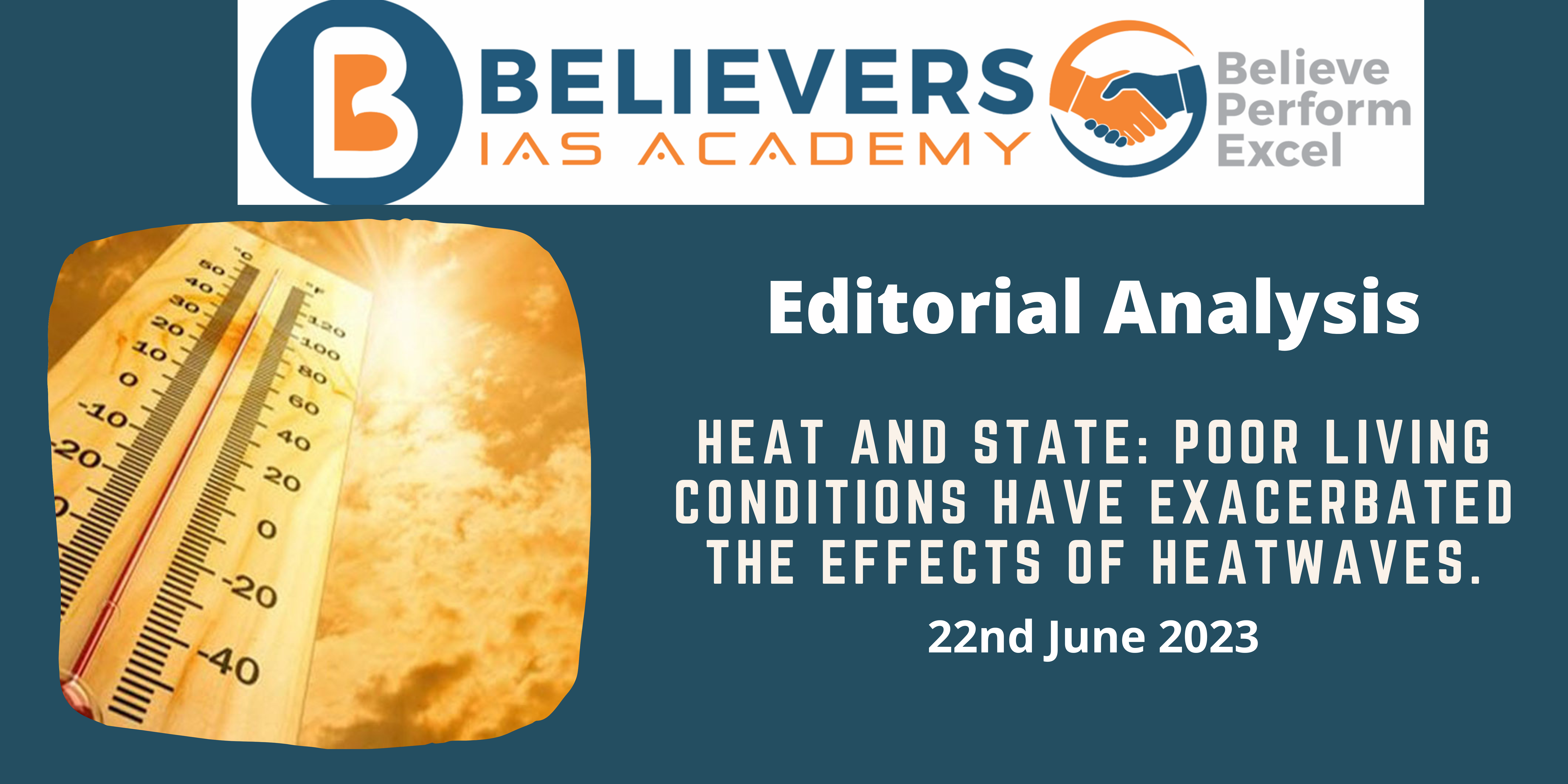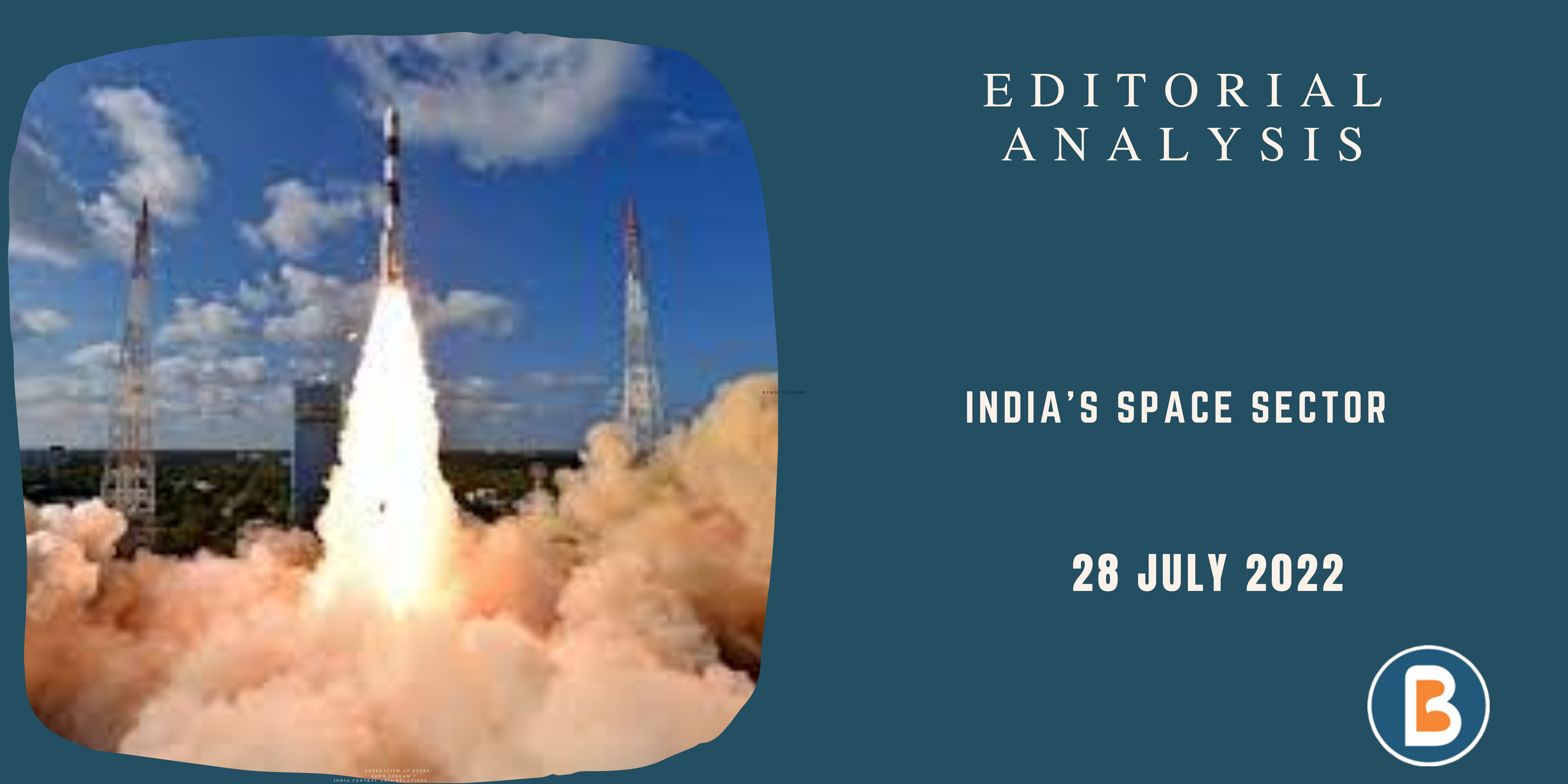Heat and State: Poor living conditions have exacerbated the effects of heatwaves.
Context:
The recent heatwave in Uttar Pradesh and Bihar, particularly in the district of Ballia, has led to numerous deaths and raised concerns about the role of poor living conditions in exacerbating the effects of heatwaves. While the local government initially attributed the deaths to the heat, a State-appointed team later expressed doubts and highlighted other factors.
Relevance:
GS-01 (Geophysical phenomena)
GS-02 (Government policies & Interventions)
GS-03 (Climate change, Environmental pollution and degradation)
Prelims:
- Heatwaves
- Indian meteorological department (IMD)
- Intergovernmental panel on Climate Change (IPCC)
- Passive cooling technology
Mains Questions:
- Discuss the factors contributing to the high mortality rate during heatwaves. Examine the role of public infrastructure and social security in mitigating the impact of heatwaves. (150 words)
- Critically analyse the criterion for declaring a heatwave in India and examine the impacts of heatwaves on various sectors. Discuss the measures that can be taken to mitigate the adverse effects of heatwaves and protect vulnerable populations. (250 words)
Dimensions of the article:
- What are Heatwaves.
- Criteria to declare a heatwave.
- Factors Contributing to High Mortality in Heatwaves.
- Need for Data Collection and Reporting.
What are Heatwaves?
- Heatwaves are prolonged periods of excessively hot weather, typically characterized by high temperatures that are significantly above normal for a specific region. These extreme heat events can have severe impacts on human health, ecosystems, agriculture, and infrastructure.
Criteria to declare a heatwave.
- Maximum Temperature Threshold: The maximum temperature during a heatwave must exceed the normal maximum temperature for a particular region by a certain margin.
- Duration: The extreme heat conditions should persist for a specified number of consecutive days, varying based on the region and climatic conditions.
- Diurnal Temperature Variation: Heatwaves often exhibit minimal relief during the nighttime, with higher minimum temperatures compared to normal.
- Regional Variation: Different regions in India may have varying thresholds and criteria for heatwave declaration, considering the climatic patterns and local conditions.
- Local Impact: Heatwave declaration also considers the adverse effects on human health, agriculture, and other sectors, based on local reports and observations.
- Heat Index: The heat index, which takes into account both temperature and relative humidity, may be considered to assess the severity of the heatwave.
- Heatwave Warning Systems: Meteorological departments issue heatwave warnings based on forecasts, which may trigger the declaration of a heatwave in advance.
- Monitoring Stations: Monitoring stations across the country record and analyze temperature data to identify regions experiencing extreme heat conditions.
- Historical Data: Historical weather data is compared to current conditions to determine if the temperature anomalies meet the criteria for a heatwave declaration.
- Government Guidelines: The Indian Meteorological Department (IMD) and respective state authorities provide guidelines and standards to determine the criteria for declaring a heatwave.
Factors Contributing to High Mortality in Heatwaves:
- General well-being and physical exertion: Individuals with poor health or pre-existing medical conditions are more susceptible to heat-related illnesses and fatalities.
- Acclimatization and location: Lack of acclimatization to high temperatures, coupled with living in densely populated and urban areas, increases vulnerability.
- Inadequate access to resources: Limited access to drinking water, proper healthcare, indoor ventilation, and protections against wage loss during extreme heat contribute to higher mortality rates.
- Social factors: Caste- and gender-based strictures often hinder individuals from taking necessary precautions, seeking medical help, or accessing relief measures during heatwaves.
Need for Data Collection and Reporting:
- Accurate recording of heat-related deaths: Proper registration of heat-related deaths, assigning appropriate causes, and issuing Medical Certificates of Cause of Death (MCCDs) following international standards are crucial for accurate data collection.
- Compilation and release of MCCD data: The Office of the Registrar General should compile and release annual MCCD reports, facilitating independent research, policy formulation, and preventing disputes over official versus actual figures.
- Challenges in data reporting: The 2020 report revealed shortcomings in Bihar’s data reporting, with causes assigned to only 3.4% of registered deaths. Improved data reporting can help identify gaps and prioritize interventions effectively.
Way Forward:
To address the challenges posed by heatwaves and improve living conditions for vulnerable populations, the following steps are essential:
- Strengthen infrastructure: Governments must invest in public infrastructure, including access to clean drinking water, improved ventilation, and cooling facilities in hospitals and public spaces.
- Awareness campaigns: Launch comprehensive awareness campaigns to educate communities about heatwave risks, preventive measures, and available resources.
- Policy interventions: Introduce policies that mandate work breaks, provide wage protection, and ensure healthcare access during heatwaves.
- Data transparency: Improve data collection, assign accurate causes of death, and release annual MCCD reports to enable evidence-based research, policy formulation, and effective interventions.
- Social empowerment: Address social barriers such as caste- and gender-based strictures that hinder individuals from seeking assistance during heatwaves.
Conclusion:
Recognizing that poor living conditions contribute significantly to the impacts of heatwaves is crucial in addressing this aspect of the climate crisis. Governments must prioritize infrastructure development, awareness campaigns, and policy interventions to mitigate the effects of heatwaves and ensure the well-being of vulnerable communities. Improved data collection and transparency are vital for effective planning and resource allocation.




